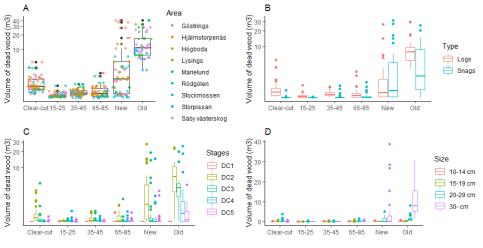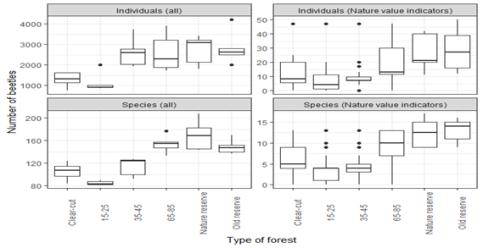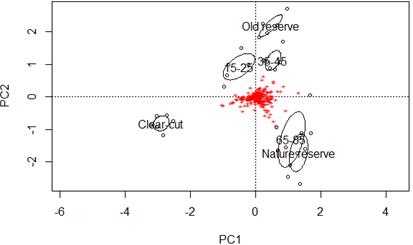Results
Differences between sites
The highest amount of dead wood, and the highest variety of dead wood were found in nature reserves (new & old), while all production forests had a very low amount, and variety of dead wood.

Nature reserves had the highest number of species and individuals, while production forests 15-25 years old had the lowest number.

Clear-cuts had a different composition of saproxylic beetle species than other forest types. Species composition in production forests 65-85 years old had some similarities with composition of nature reserves.

Ecological variables
Quantity and quality of dead wood, as well as canopy openness, had a positive correlation for number of individuals. Vegetation cover, basal area, and type of dead wood likely had a positive correlation with species richness and biomass.

Responsible for this page:
Director of undergraduate studies Biology
Last updated:
05/14/21
